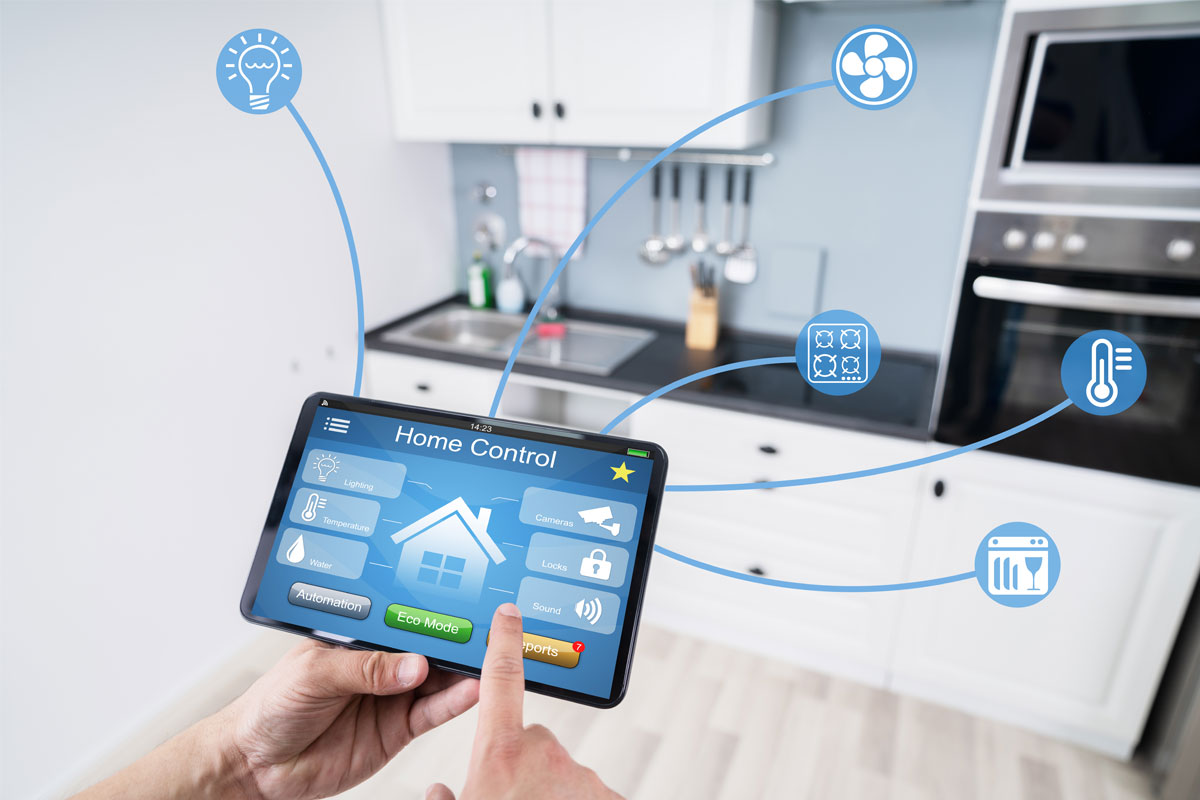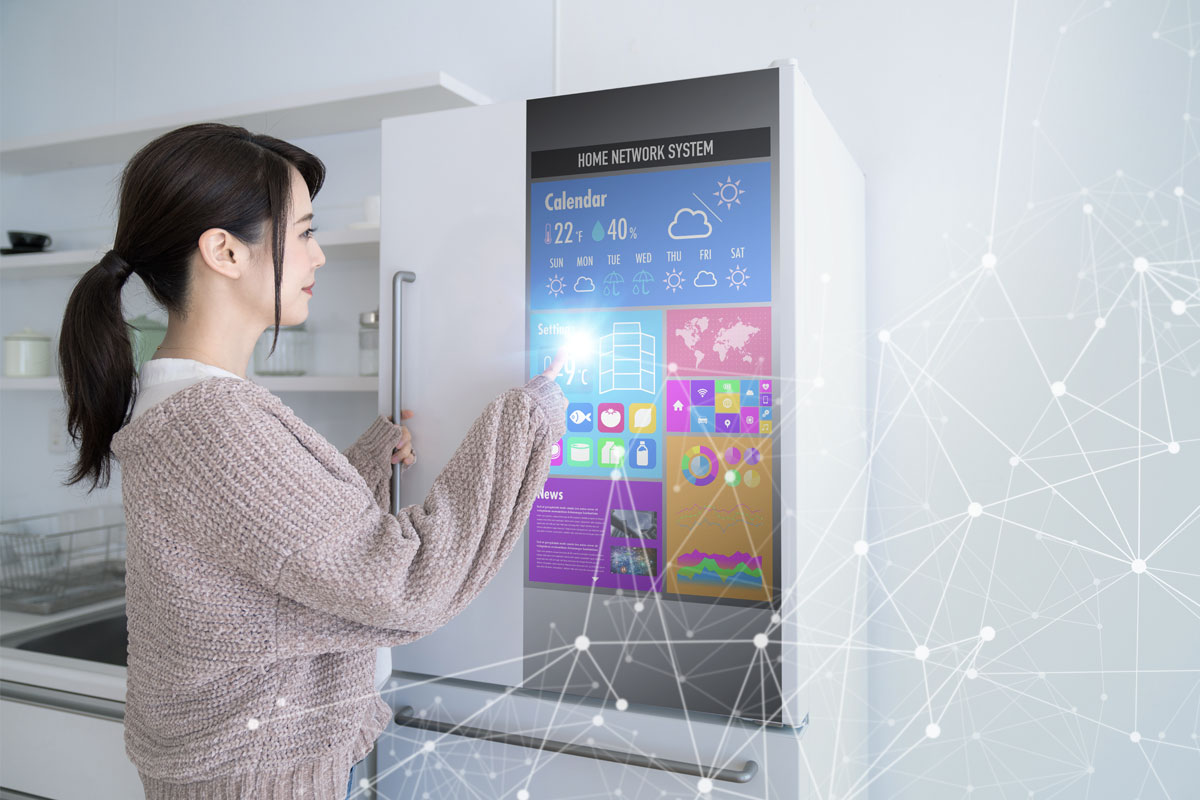
Smart homes are doing more than simply making the lives of homeowners easier. Using edge devices, home systems can become interconnected and automated. Pairing these connected home systems with artificial intelligence (AI) means homes can be optimized for ultimate energy efficiency.
In this way, smart homes have an incredible potential to combat climate change by reducing emissions and energy usage. A study published in Environment International discovered that an incredible one-third of the world’s carbon dioxide emissions result from household energy consumption. From running a dryer to cooking dinner, if these daily tasks can use less energy, there is a wealth of global opportunities for reducing CO2 emissions.
Home automation systems provide one answer to this issue. Early studies on home automation found that these systems can reduce CO2 emissions by 13%. As technology improves and AI advances, it is easy to envision a future in which smart homes result in even greater energy efficiency. Take a look at some key areas where smart technology is leading the way in combatting climate change.
Home Monitoring Systems
A home monitoring system is designed to allow homeowners to track their energy usage in real time. These systems use battery-powered and Wi-Fi®-enabled smart home devices to monitor electricity, water, and gas consumption.
A home monitoring system helps homeowners understand where and how they are using energy, which can empower them to make changes to reduce energy usage, resulting in both cost savings and a reduction in carbon emissions.
Access Control Kits

Home access control kits utilize keyless entry systems and smart locks to control access to the home. These systems help improve home security and prevent unnecessary energy usage.
By pairing access control kits with other smart building devices, such as smart thermostats, the devices can automatically detect when people are in the home. Other smart devices can reduce energy usage when the access system indicates that no one is home.
Voice Assistants
Anyone who has been inconvenienced by walking upstairs to turn off a light can understand the potential benefits of voice assistants to aid in energy reduction. With voice assistants, such as Amazon’s Alexa or Google’s Home, homeowners can use voice commands to easily turn off lights, adjust thermostats, and control appliances.
Water Sensors
Water sensors are another smart device helping to prevent and manage resource use. These devices detect leaks and monitor water usage. They can be installed where leaks are most likely to occur and can alert homeowners of a leak, effectively preventing water waste and tracking how much water is used. This can help homeowners identify high consumption patterns and make changes to reduce water usage.
Watering Systems
Smart watering systems can also optimize water schedules and reduce water usage. Using an app or smart home hub, homeowners can program the systems to water when necessary. For example, a smart watering system can detect periods of heavy rainfall and skip watering altogether. Additionally, many of these systems have built-in sensors that intelligently detect the soil’s moisture level and adjust watering accordingly. They can also be connected to weather forecasting apps, optimizing schedules based on predicted weather conditions.
Smart Lighting
Smart lighting can automatically adjust lighting levels based on how much natural light is in a room and the occupancy of a space. Motion-sensor switches have been shown to reduce energy consumption by 35% to 45%. Rather than lighting an empty home or lighting a room during daylight hours, smart lighting reduces energy usage in these scenarios.
Smart Thermostats
Smart thermostats are leading the way in cutting home energy consumption by optimizing heating and cooling systems via an app or smart home hub. A smart thermostat can adjust the indoor temperature based on a person’s schedule and even learn from previous patterns and behaviors.
According to Google, the Nest Learning Thermostat saves homeowners, on average, 10% to 12% on heating and 15% on cooling, leading to a lower energy bill and decreased carbon emissions.
Google’s Nest Renew Service
It is also worth noting that Google now offers a Nest Renew service for certain models. This program allows homeowners to upgrade their Nest smart home devices to the latest model, encouraging homeowners are using the latest, most energy-efficient Nest devices possible. The program also includes a recycling program, reducing waste, and promoting sustainability.
Smart Window Treatments
Beyond improving insulation, smart window treatments can adjust their functions based on the time of day, temperature, and amount of natural light. You can program these intelligent window treatments, including blinds, shades, and drapes, to close during the day’s heat or to open during the morning light to reduce the need for artificial lights. More advanced smart window treatments also come with built-in sensors to adjust settings based on real-time data regarding the room’s temperature and light.
Smart Appliances
Smart appliances can help reduce energy consumption by allowing homeowners to control their appliances with the tap of a finger. A homeowner can turn off appliances while away and activate appliances only when needed through connected apps.
New smart appliances use sensors to adjust energy usage automatically. For example, a smart fridge might adjust the amount of cooling based on how much is stored in the fridge.
Smart Plugs
Smart plugs are wireless devices that can be used to remotely control and monitor the energy usage of non-smart products. For example, a coffee pot can be plugged into a smart plug and turned on and off through an app or smart home hub. These handy plugs allow homeowners to integrate almost any device into a smart home system, monitoring and optimizing energy usage throughout the day.

How Ambiq Contributes
At Ambiq, our technologies, products, and solutions are designed to increase compute power at unprecedented energy levels, which will in turn help us achieve enabling artificial intelligence (AI) on all mobile and portable devices. We believe in combatting climate change through the use of AI and smart devices, reducing energy consumption globally.
Indeed, through the advanced Sub-threshold Power Optimized Technology (SPOT®) platform, Ambiq has helped many leading manufacturers worldwide create products that can operate for days, months, and sometimes years on a lithium battery or a single charge. Visit https://ambiq.com/wearables for more information.


